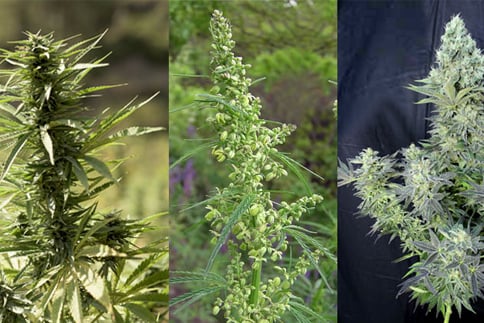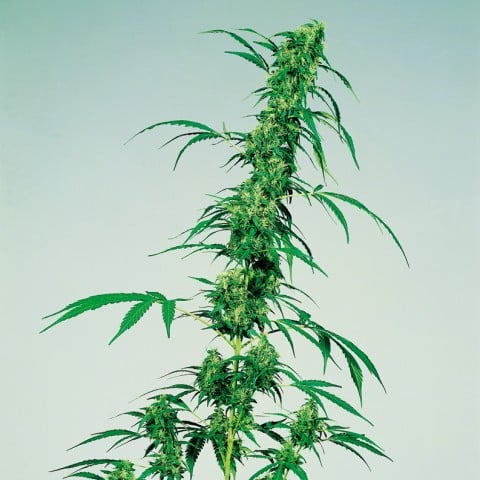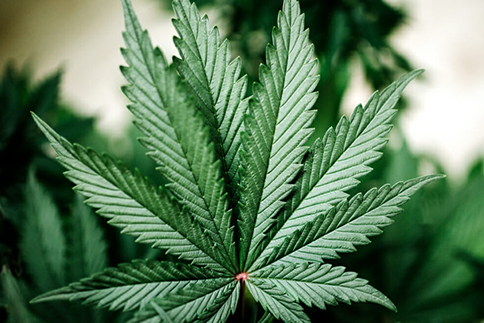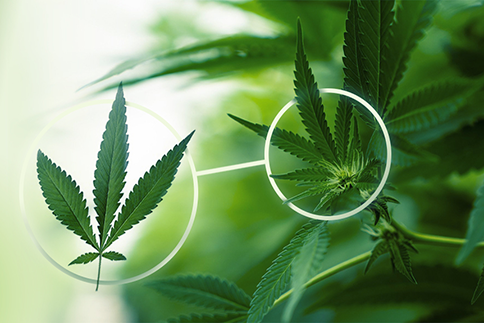Different Types Of Cannabis Plants
Different Types Of Cannabis Plants
Like all other plants in the world, cannabis has different types known as species and subspecies. This is similar to choosing between a red buff tomato and a cherry tomato at the grocery store. Types of cannabis, just like tomatoes, can even come in different forms: their buds can be of different colors, their stalks of different heights, and their overall shape can be different.

Understand Strains: Three Types of Cannabis
When choosing cannabis or browsing the options at your local bud shop/dispensary, you'll likely notice that the strains are broken up into a few distinct groups these are Sativa, Indica, Ruderalis, and Hybrids.
Not only do these different plant strains have different appearances, but they also have different combinations of cannabinoids. These are the active ingredients, which are why we seek out the drug and why we consume it, lifts our spirits, and gives us all sorts of spiritual and medical benefits. So not surprisingly, the different strains each have different effects, whether that's sedating, invigorating, uplifting, boosting our creativity, or relaxing us.
In the next section, we will examine the significant differences between the three cannabis types because they are different.
Cannabis Sativa
In the field of medicinal cannabis, pure Sativa cannabis is rare because these strains are difficult to cultivate, especially indoors and outdoors in the Northern Hemisphere, Northern USA, and Canada. These types of seeds are also rare because suppliers like to stock popular strains, while all-natural Sativa seeds are less popular. Sativa originates primarily from tropical latitudes, equatorial regions (Colombia, Mexico, and Southeast Asia). They grow into tall, sparse plants with narrow leaves and a light green color. They grow faster and taller than indica plants, reaching heights of up to 20 feet in a single season. After flowering, they may take 10 to 16 weeks to reach full maturity. Tastes vary from sweet and fruity to earthly.
The purity of Sativa cannabis often causes feelings of paranoia and irregular heartbeats. Therefore, pure Sativa as a medicinal product is a rare choice. If you take too much Sativa, you may have a similar feeling of loading up on too much caffeine.
The positive effects of sativas are its invigorating or uplifting abilities and may help against depression, fatigue, stimulate the appetite, reduce pain and nausea. Sativas was a widely available strain prevalent in North America in the 1960s and 1970s. Although pure Sativa is rare, bud growers will often exploit its genetic stability to create designed hybrids. The "haze" varieties of cannabis for sale at your local bud shop will be mainly sativa based.

Advantages of hybrid Sativa
These are rice varieties that have been cross-pollinated by breeders and are known to meet special criteria, such as exotic smells, tastes, and the stimulating effects of sativas. These hybrids usually contain some of the genes of Indica, but tend to be mostly Sativa in nature.
Hybrid Sativa dominant strains are coveted for their dynamic properties and usually do not have the paranoia associated with pure Sativa strains. Sativa's dominant strains are exhilarating, energetic, and "heady" high, best suited to daytime smoking. These types have antidepressant and appetite-stimulating properties and are often sought out for medicine in this respect.
Cannabis Indica
Indica is very different in appearance and effect from its sister hemp varieties, larger in appearance. Indica only grows to 6 feet tall, usually about 3 feet tall. These short, sturdy plants lack in high the makeup for in a broad bushy appearance with large leaves that grow broad. Indica grows much faster than Sativa, and each plant produces more buds.
These physical characteristics are the opposite of variations of Sativa, and the differences don't stop there.
Whereas the tall Sativa plans require a lot of space to be produced successfully, the smaller Indica strains are favored for growing indoors. Plants usually enter the flowering stage and then enter the harvest faster, maturing 6 to 8 weeks after flowering. This also increases their inclination to the indoor environment as these shorter growing cycles lead to faster crop rotation.
Indica originates in Central Asia and is distributed in Afghanistan, Pakistan, Tibet, and other countries. In Nepal, Afghanistan, Lebanon, Pakistan, Turkistan, and other countries, the crop grows mostly above 30 degrees north latitude.
These strains usually contain a high volume of resin, which is an essential ingredient for hashish production.
Promoting relaxation and tranquility, the Indica strains tend to relax the body and mind, generally producing more "body high" and less effect on the brain. Many indica type strains have shown incredible results in combating insomnia, various types of pain, mood disorders, anxiety, chronic stress, depression, and other similar medical conditions or illnesses. It is important to take indica at the right time of day, as this strain may have a heavy sedative effect, and if you smoke too early, it could be difficult to function throughout the day. So it makes a great nightcap. Cannabis varieties labeled as "skunk" will likely be indica dominated.

Credit for photo: kindmedsaz.com
Cannabis Ruderalis
Ruderalis is a subspecies that originated in central Russia, it's adapted to the extreme conditions of Siberia, Russia, and the Himalayan region and has some very unique qualities. Ruderalis are small hardy plants rarely growing more than a foot or two in height although the height can reach 1.5 meters. The one advantage they have is the ability to grow fast, going from seed to maturity and harvest in little over a month.
Ruderalis contains so little THC that it is hardly ever used for recreational purposes. And while it has a much higher content of CBD (cannabidiol) it's still not very potent when compared to sativa or indica strains.
Ruderalis is interesting because it blooms according to age, not photoperiod. This is called automatic flowering. This means that regardless of the light it gets, whether in a room under 24-hour light or outside getting less than 12 hours of light a day, it will start to bloom automatically on its own genetic schedule. Therefore, it is often crossbred with or Sativa or Indica, the resulting plants are made to keep the potency of other strains while inheriting the auto flowing trait from the ruderalis strain.
Ruderalis is also quite resistant to the damage caused by insects or disease. Ruderalis cannabis and it's genetic/medical benefits have dramatically changed the way geneticists and seed breeders produce strains. It is one of the least used basic genetics to date, but it is rapidly changing across the industry.

Credit for photo: greencamp.com
Hybrid Strains
Hybrid strains are have been bred from all other strains often targeting a certain high of desired medical treatment. Because of the extensive history of cross-breeding different strains and substrains, it's rare to find any pure indica or sativa lineages these days. while most hybrids will be labeled as Sativa or Indica they will likely be hybrids with features from each strain but predominant physical characterizes of the labeled strain.
Final thoughts on different strains of cannabis
With well over 1000 different strains and subspecies being bread over the past 70+ years it's important to know the main features and different properties the main strains exhibit. Some strains are particularly designed or adapted to treat specific conditions, so knowing that can be crucial when choosing the best therapy for your requirements.
